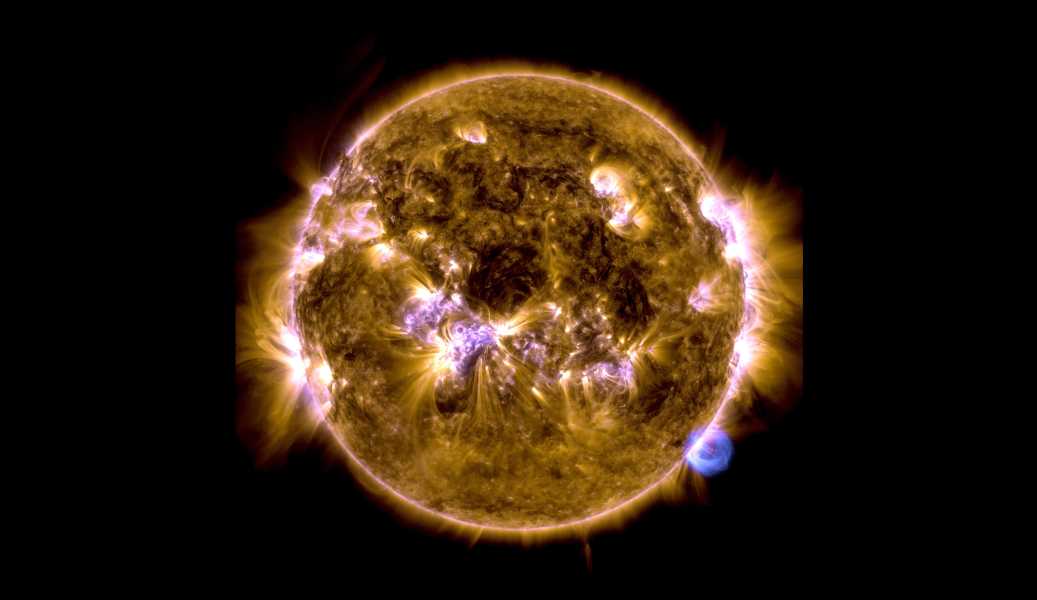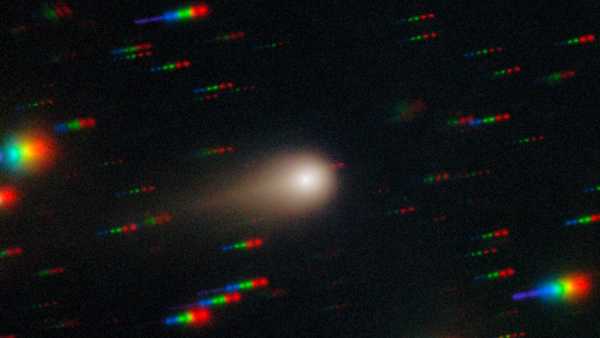
A solar flare erupting from the Sun, captured in ultraviolet light by NASA's Solar Dynamics Observatory on February 9, 2024. (Image credit: NASA/SDO)
While making a perilous plunge into the Sun's atmosphere, NASA's Parker Solar Probe has directly captured a powerful plume of plasma heading toward our star's surface with unprecedented clarity.
Parker’s new data revealed protons with energies about 1,000 times higher than expected, as well as a plasma jet shooting toward the Sun rather than away from it. Parker was in a unique position between the Sun and the source of the particles, allowing scientists to easily determine their origin. These results show that the complexity and power of the Sun’s magnetic field can accelerate charged particles to much higher speeds than would be expected from the field alone.
The plasma jet toward the sun was caused by a process called “magnetic reconnection” in the sun’s atmosphere, an explosive event in which magnetic fields are disrupted and reconnected. This powerful event converts the energy contained in the sun’s magnetic field into energy that accelerates the solar wind, a constant stream of charged particles that the sun blasts into the solar system.
You may like
- Watch creepy 'UFOs' and a solar 'cyclone' take shape in ESA's stunning new video of the Sun
- Mysterious 100-year solar cycle may have just restarted
- The Sun Just Produced Its Most Powerful Solar Flares of 2025 — and More Flares Could Be Headed Towards Earth
Understanding magnetic reconnection is key to better predicting space weather caused by solar wind and other energetic outbursts from our star. Space weather is believed to be the main culprit behind the loss of Mars’ atmosphere, turning it from a habitable planet into a frigid desert. On Earth, space weather can cause geomagnetic storms that cause power outages, damage satellites, interfere with radio and GPS signals, and even endanger the lives of astronauts. On the other hand, it also creates Earth’s magnificent auroras.
The Sun’s magnetic field is incredibly powerful, complex, and dynamic. Predicting space weather requires sophisticated computer simulations based on equations that describe the behavior of magnetic fields. But the Sun is so large and complex that these equations will always be approximations. To improve the accuracy of their models, scientists need to collect extremely detailed measurements of the Sun. That’s where Parker Solar Probe comes in.
Sourse: www.livescience.com





